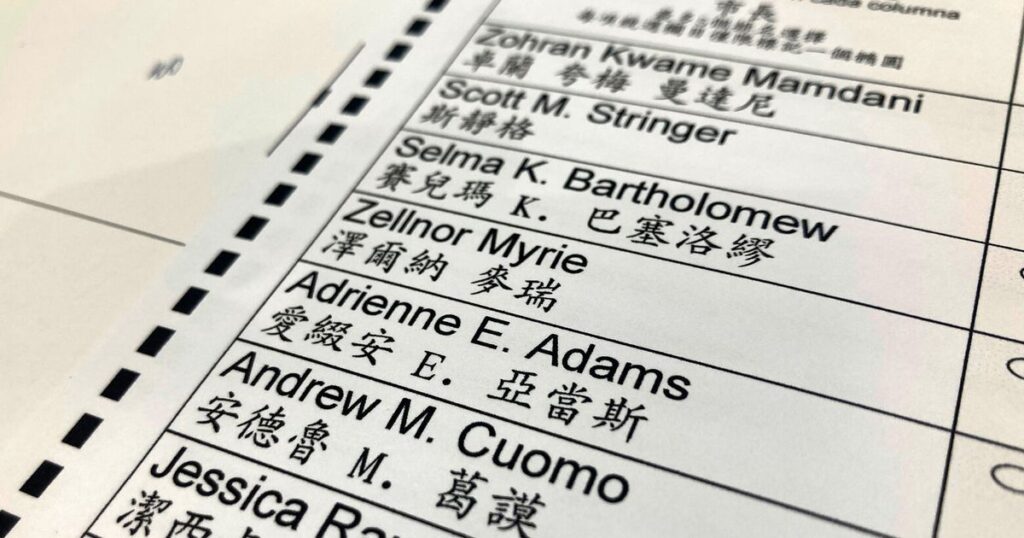In at the moment’s polarized political local weather, discovering widespread floor can really feel unattainable. However one electoral reform — ranked-choice voting — is quietly remodeling how we elect our leaders, not by favoring one ideology over one other, however by increasing the democratic course of itself. RCV helps guarantee extra voters are heard, extra candidates feel encouraged to run and extra communities see themselves mirrored in authorities. That’s not a partisan dream — it’s a democratic one.
One of many clearest examples of RCV’s promise is what lately occurred in New York Metropolis, the place voters used RCV to push candidates like Zohran Mamdani via the first. Whereas Mamdani has rapidly turn out to be a rising star — trending on social media and lauded by left-leaning commentators — his story isn’t nearly message and media savvy. It’s about how ranked-choice voting empowered new voices, amplified coalition-building and in the end helped an unconventional candidate succeed.
The actual story behind Mamdani’s breakthrough is how he strategically embraced the distinctive construction of RCV. He shaped a mutual endorsement with fellow candidate Brad Lander and even inspired his supporters to donate to Adrienne Adams, one other candidate within the race. In a conventional single-choice election, this type of collaboration may appear counterintuitive and even self-defeating. However below RCV, it was each strategic and highly effective. These alliances helped Mamdani achieve second- and third-choice votes from like-minded voters, reinforcing the concept candidates may elevate one another up — and nonetheless win.
This type of coalition-building isn’t simply good politics. It’s good for democracy. Voters noticed a refreshing departure from the zero-sum, cutthroat campaigning we’ve come to anticipate. As an alternative of tearing one another down, candidates centered on shared targets and values. As Lander put it, “Folks mentioned, ‘We love the thought of politics extra as a group sport for the way forward for our metropolis.’” RCV makes that doable.
And the advantages of RCV prolong past a single race in New York Metropolis. The town’s first RCV election in 2021 helped usher in essentially the most various metropolis council in its historical past: 31 of the 51 seats at the moment are held by girls, 26 of whom are girls of colour. This historic stage of illustration didn’t occur accidentally. It occurred as a result of RCV gave voters extra voice, and candidates extra incentive to run with out worry of being labeled a “spoiler.”
Maybe most compelling, turnout elevated dramatically. Between the 2021 and 2025 mayoral primaries, New York noticed a 101% increase in voter turnout — and almost 1 / 4 of these voters hadn’t participated in a Democratic main since 2012. RCV didn’t simply reshape the candidate pool. It reignited civic engagement.
Now, it’s Seattle’s flip.
Because of a 2022 ballot measure, Seattle will use ranked-choice voting for its 2027 main elections. With our present top-two main, candidates should differentiate themselves sharply simply to outlive — even after they agree on 95% of the problems. As an alternative of constructing momentum collectively, they cut up the vote and danger canceling one another out.
RCV modifications that. It rewards cooperation and shared imaginative and prescient. It permits voters to specific their full preferences with out worry of losing their vote. It helps grassroots candidates who’ve but to construct highly effective political connections to compete on a stage taking part in subject. And it invitations extra folks into the method by making elections extra significant and inclusive.
As Seattle prepares to implement RCV, we should guarantee each voters and campaigns perceive tips on how to take advantage of it. Exit polls throughout the nation constantly present voters perceive RCV — and prefer it as soon as they’ve used it. However to completely unlock its energy, campaigns should adapt their methods and give attention to what unites us, not what divides us.
If we need to hear new voices — from each neighborhood and throughout the political spectrum — we want instruments that broaden the voters and deepen participation. RCV is a type of instruments. It’s not about left or proper. It’s about ahead.

